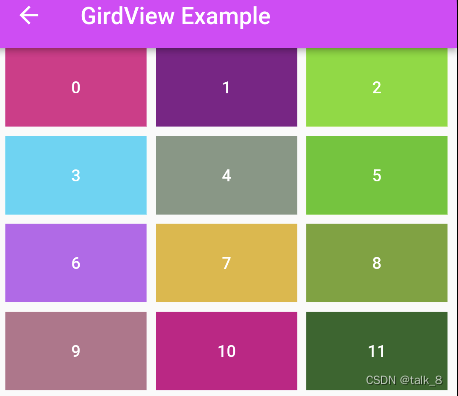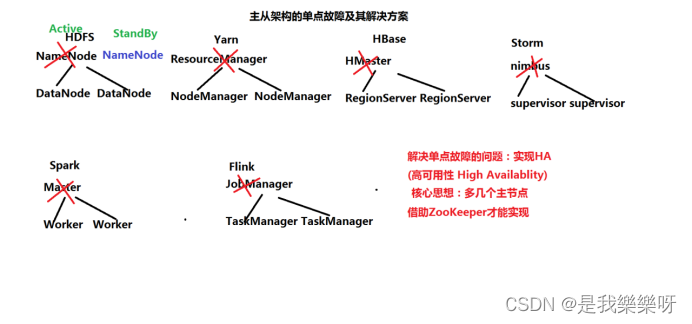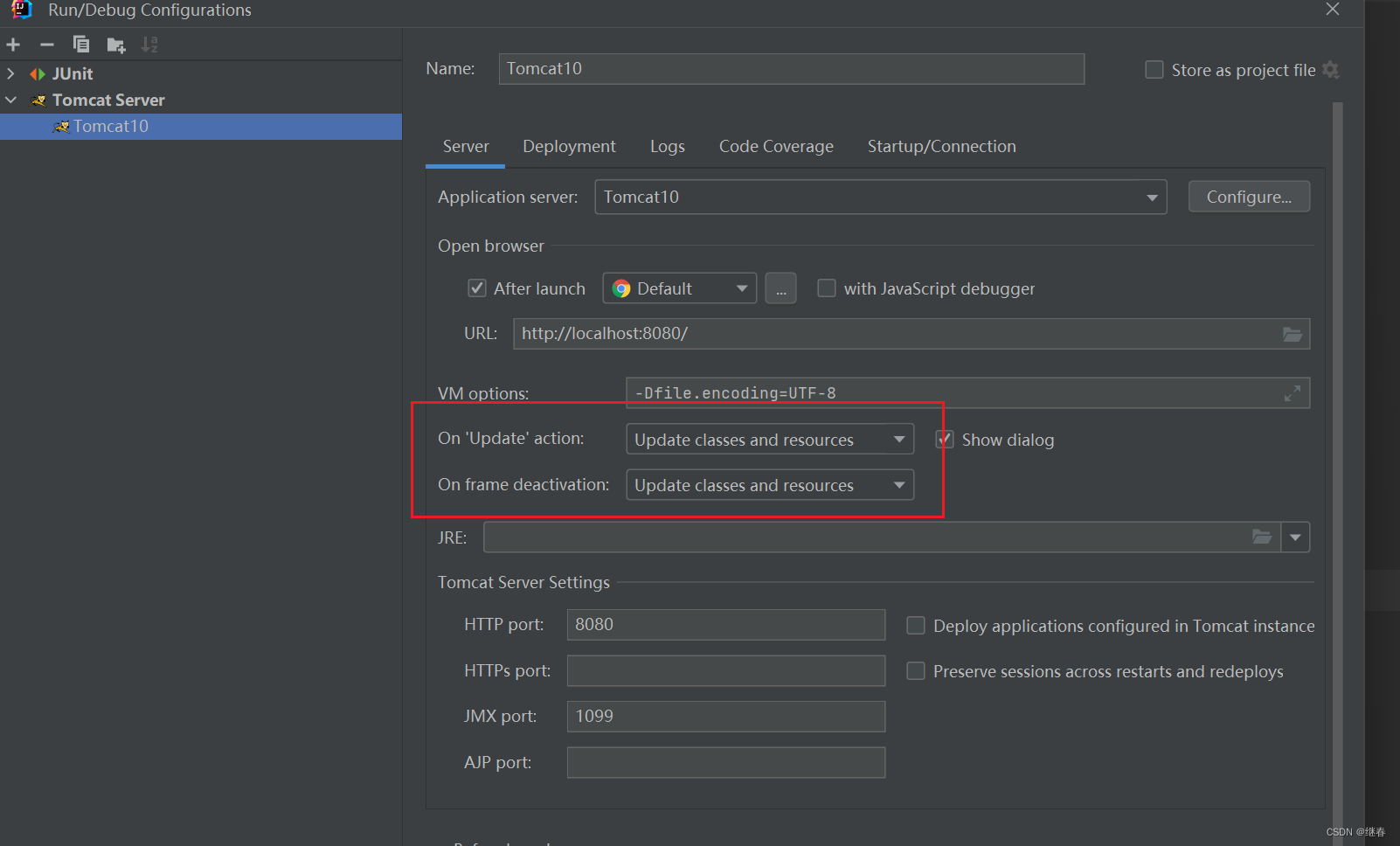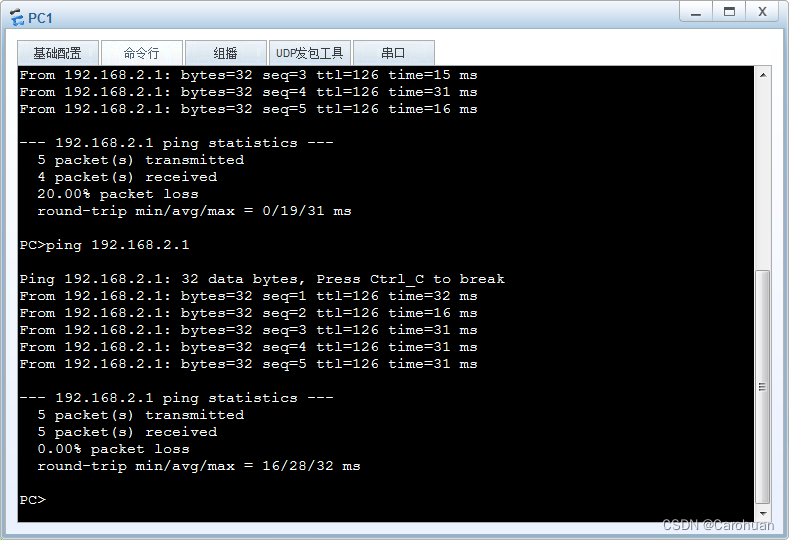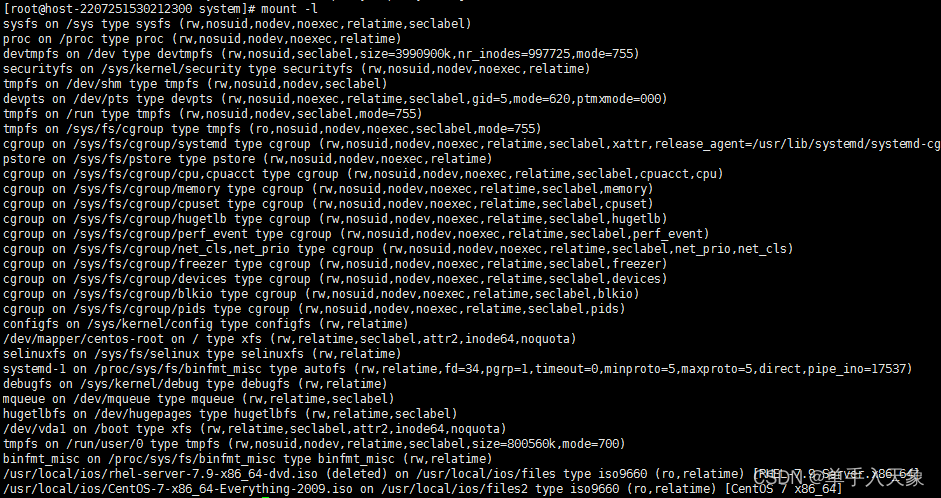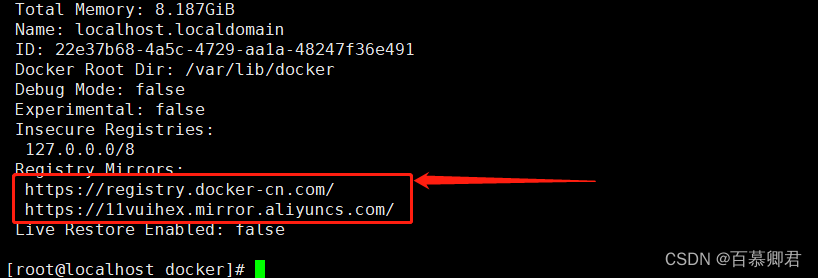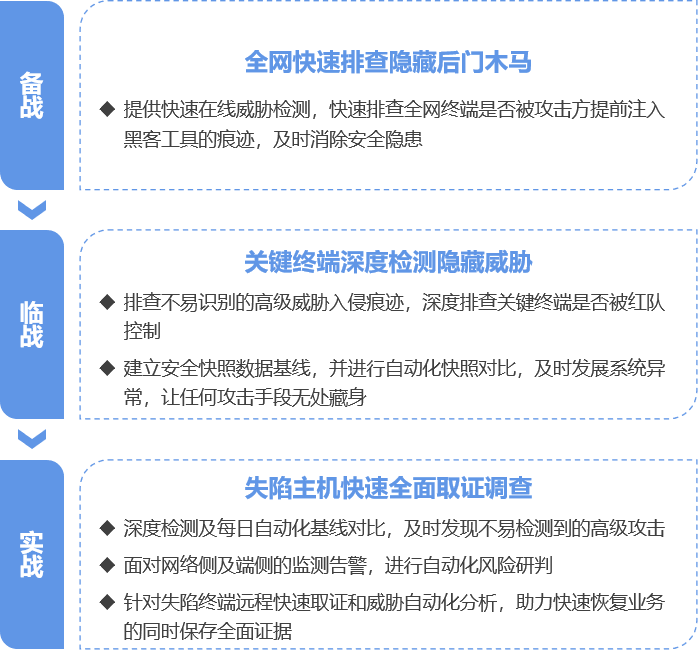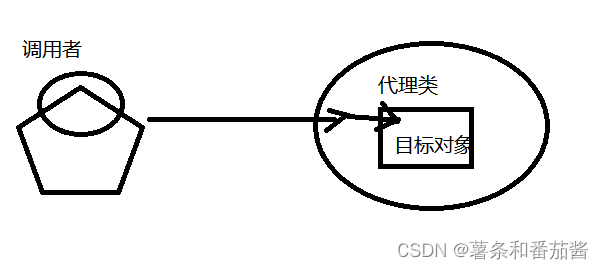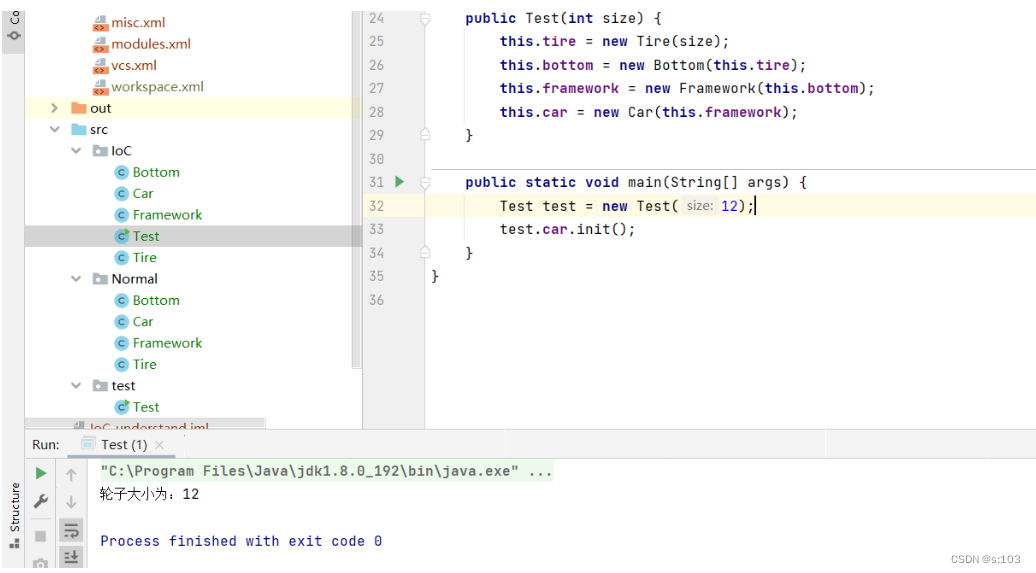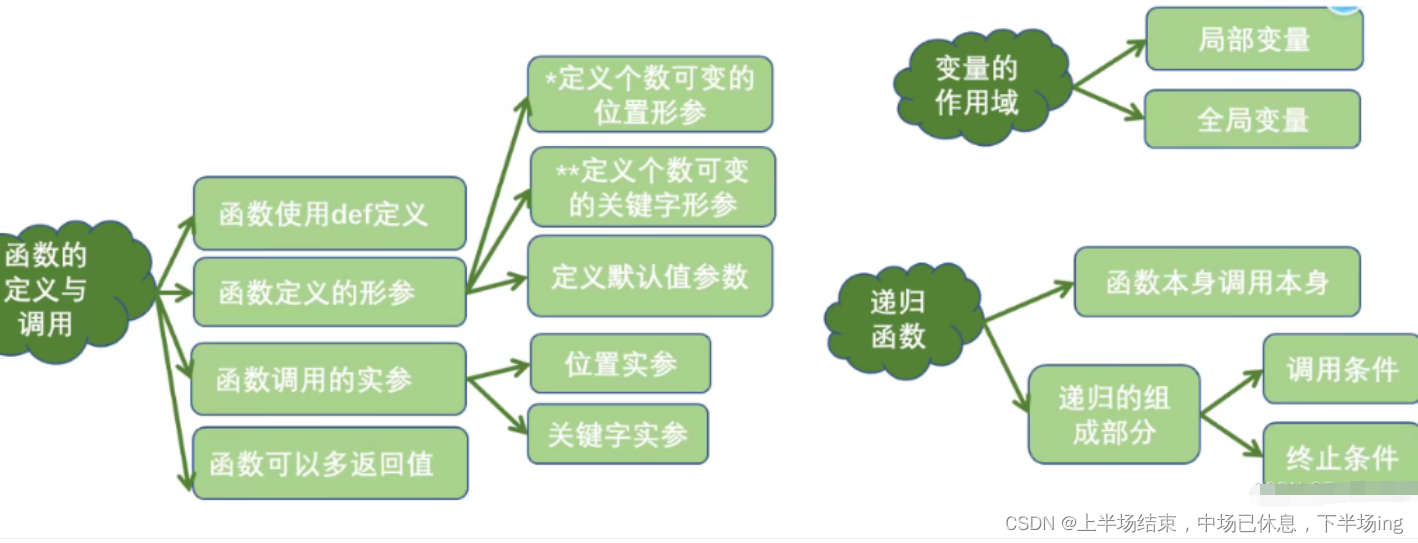1.1 背景
Axios 是一个基于 promise 的 HTTP 库,可以用在浏览器和 node.js 中, 也是 vue 官方推荐使用的 http 库;封装axios,一方面为了以后维护方便,另一方面也可以对请求进行自定义处理。
1.2 vue请求模块选择
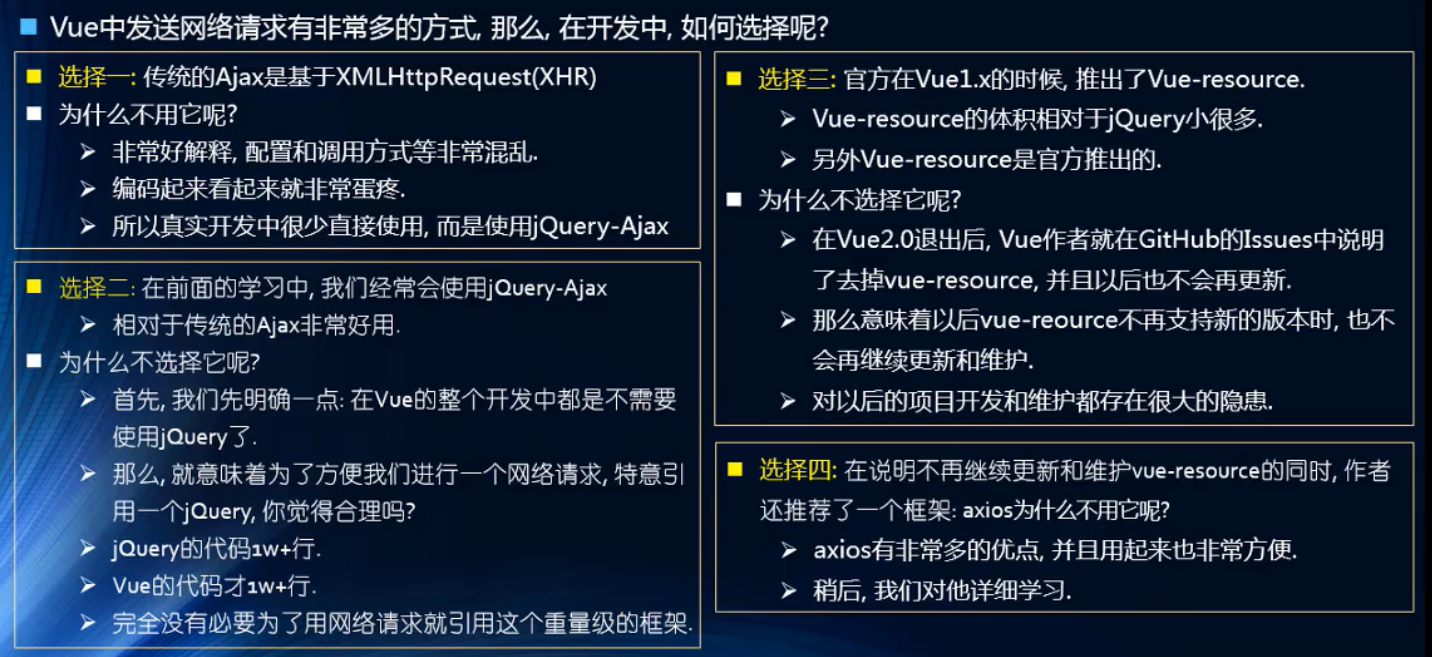
2 应用
2.1 安装axios依赖
npm install axios --save
2.2 GET 方法
📌1、引用axios模块
import axios from "axios";
📌2、get请求
<template>
<div>
<button @click="send">发送get</button>
<br />
{{info}}
</div>
</template>
<script>
import axios from "axios";
export default {
data() {
return {
info: null
};
},
methods: {
send() {
axios.get('https://www.runoob.com/try/ajax/json_demo.json')
.then(response => (this.info = response))
.catch(function(error) {
// 请求失败处理
console.log(error);
});
}
}
};
</script>

⚠️⚠️跨域访问问题,解决方案:
vue.config.js增加本地映射。
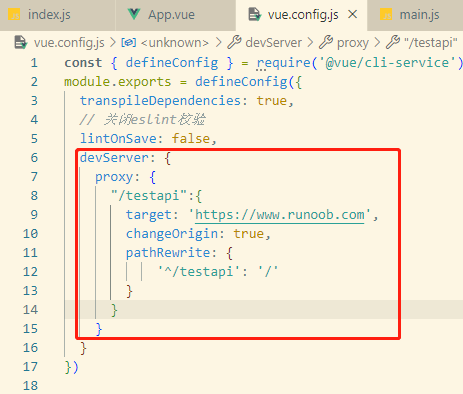
devServer: {
proxy: {
"/testapi":{ //testapi 这个用来和根路径 baseURL 进行匹配
target: 'https://www.runoob.com',
changeOrigin: true,
pathRewrite: {
'^/testapi': '/'
}
}
}
}
- 📍target:跨域请求的地址
- 📍changeOrigin:是否允许跨域请求,在本地会创建一个虚拟服务端,发送接收请求数据,这样服务端和服务端进行数据的交互就不会有跨域问题
- 📍pathRewrite:路径重写,替换请求地址,将地址 testapi 替换为空,示例:https://www.runoob.com/testapi/try/ajax/json_demo.json 转换成 https://www.runoob.com/try/ajax/json_demo.json
⚠️ 注意: ⚠️vue.config.js文件修改后,需要 npm run serve 重新启动,才能生效。
📌3、get请求url修改
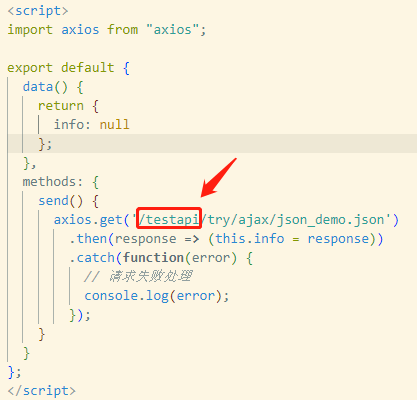
<script>
import axios from "axios";
export default {
data() {
return {
info: null
};
},
methods: {
send() {
axios.get('/testapi/try/ajax/json_demo.json')
.then(response => (this.info = response))
.catch(function(error) {
// 请求失败处理
console.log(error);
});
}
}
};
</script>

2.3 API
axios 可以通过配置(config)来发送请求。config 指的是一个包含请求配置的对象。它可以包含各种属性,用于设置请求的细节和行为。
具体来说,config对象可以包含以下属性:
- url: 请求的URL地址。
- method: 请求的HTTP方法,例如GET、POST、PUT、DELETE等。
- params: 请求的URL参数,一个键值对形式的对象。
- data: 请求的数据,一个JavaScript对象或FormData对象。
- headers: 请求头对象,包含请求头信息的键值对。
- timeout: 请求的超时时间,单位是毫秒。
- responseType: 响应的数据类型,例如json、text、blob等。
- withCredentials: 是否携带跨域请求时的Cookie信息。
- auth: 用于设置HTTP基本认证信息的对象,包含用户名和密码。
- onUploadProgress: 上传进度回调函数。
- onDownloadProgress: 下载进度回调函数。
以上仅列出了一些常用的配置属性,实际上 config 对象还可以包含其他属性,例如validateStatus、maxRedirects、proxy等等。
2.3.1 axios(config)
axios({
method:"GET",
url: '/api/try/ajax/json_demo.json',
params: {
firstParam: "111",
secondParam: "222"
}
})
.then(response => (this.info = response))
.catch(function(error) {
// 请求失败处理
console.log(error);
});
}
最终请求地址:try/ajax/json_demo.json?firstParam=111&secondParam=222
⚠️ 注意: ⚠️默认的请求方式是 GET,如果不写 method,默认 method:"GET"。
2.3.2 axios(url[,config])
axios('/api/try/ajax/json_demo.json', {
method:"GET",
params: {
firstParam: "111",
secondParam: "222"
}
})
.then(response => (this.info = response))
.catch(function(error) {
// 请求失败处理
console.log(error);
});
🎈[,config]是可选项,如果没有请求参数,可以简写:
axios('/api/try/ajax/json_demo.json')
.then(response => (this.info = response))
.catch(function(error) {
// 请求失败处理
console.log(error);
});
2.3.3 请求方式的别名
axios.request(config);
axios.get(url[,config]);
axios.delete(url[,config]);
axios.head(url[,config]);
axios.post(url[,data[,config]]);
axios.put(url[,data[,config]])
axios.patch(url[,data[,config]])
📌示例:
axios.get('/api/try/ajax/json_demo.json')
☝️ 这里对所有已经支持的请求方式都提供了方便的别名,当我们在使用别名方法的时候,url、method、data这几个参数不需要在配置中声明。
2.3.4 axios.create([config])
📌1、创建一个axios实例,并且可以自定义其配置。
var instance = axios.create({
baseURL:"https://some-domain.com/api/",
timeout:1000,
headers: {'X-Custom-Header':'foobar'}
});
📌2、用创建的实例对象发送请求
instance.get('/a.json',{
timeout: 3000
}).then()
⚠️ 注: 使用创建的 axios 实例请求时,请求的配置项将与实例的配置合并。优先级:axios请求配置 > axios实例配置 > axios全局配置
2.4 POST 方法
//方式一:
axios('/api/try/ajax/demo_axios_post.php', {
method: "POST"
})
.then(response => (this.info = response))
.catch(function(error) {
// 请求失败处理
console.log(error);
});
}
//方式二:
axios({
method:"POST",
url: '/api/try/ajax/demo_axios_post.php'
})
//方式三:
axios.post('/api/try/ajax/demo_axios_post.php')
💦 POST 方法传递参数格式如下:
//方式一:
axios({
method:"POST",
url: '/api/try/ajax/demo_axios_post.php',
data: {
firstName: 'Fred', // 参数 firstName
lastName: 'Flintstone' // 参数 lastName
}
})
//方式二:
axios.post('/api/try/ajax/demo_axios_post.php', {
firstName: 'Fred', // 参数 firstName
lastName: 'Flintstone' // 参数 lastName
})
最终请求地址:try/ajax/demo_axios_post.php
报文体:{firstName: "Fred", lastName: "Flintstone"}
2.5 执行多个并发请求
//iterable是一个可以迭代的参数如数组等
axios.all(iterable)
//callback要等到所有请求都完成才会执行
axios.spread(callback)
function getUserAccount(){
return axios.get('/user/12345');
}
function getUserPermissions(){
return axios.get('/user/12345/permissions');
}
axios.all([getUserAccount(),getUserPermissions()])
.then(axios.spread(function(acct,perms){
//当这两个请求都完成的时候会触发这个函数,两个参数分别代表返回的结果
}))
3 配置
3.1 请求的配置(request config)
以下就是请求的配置选项,只有 url 选项是必须的,如果 method 选项未定义,那么它默认是以GET的方式发出请求
{
// `url` 是用于请求的服务器 URL
url: "/user",
// `method` 是创建请求时使用的方法
method: "get", // 默认是 get
// `baseURL` 将自动加在 `url` 前面,除非 `url` 是一个绝对 URL。
// 它可以通过设置一个 `baseURL` 便于为 axios 实例的方法传递相对 URL
baseURL: "https://some-domain.com/api/",
// `transformRequest` 允许在向服务器发送前,修改请求数据
// 只能用在 "PUT", "POST" 和 "PATCH" 这几个请求方法
// 后面数组中的函数必须返回一个字符串,或 ArrayBuffer,或 Stream
transformRequest: [function (data) {
// 对 data 进行任意转换处理
return data;
}],
// `transformResponse` 在传递给 then/catch 前,允许修改响应数据
transformResponse: [function (data) {
// 对 data 进行任意转换处理
return data;
}],
// `headers` 是即将被发送的自定义请求头
headers: {"X-Requested-With": "XMLHttpRequest"},
// `params` 是即将与请求一起发送的 URL 参数
// 必须是一个无格式对象(plain object)或 URLSearchParams 对象
params: {
ID: 12345
},
// `paramsSerializer` 是一个负责 `params` 序列化的函数
// (e.g. https://www.npmjs.com/package/qs, http://api.jquery.com/jquery.param/)
paramsSerializer: function(params) {
return Qs.stringify(params, {arrayFormat: "brackets"})
},
// `data` 是作为请求主体被发送的数据
// 只适用于这些请求方法 "PUT", "POST", 和 "PATCH"
// 在没有设置 `transformRequest` 时,必须是以下类型之一:
// - string, plain object, ArrayBuffer, ArrayBufferView, URLSearchParams
// - 浏览器专属:FormData, File, Blob
// - Node 专属: Stream
data: {
firstName: "Fred"
},
// `timeout` 指定请求超时的毫秒数(0 表示无超时时间)
// 如果请求花费了超过 `timeout` 的时间,请求将被中断
timeout: 1000,
// `withCredentials` 表示跨域请求时是否需要使用凭证
withCredentials: false, // 默认的
// `adapter` 允许自定义处理请求,以使测试更轻松
// 返回一个 promise 并应用一个有效的响应 (查阅 [response docs](#response-api)).
adapter: function (config) {
/* ... */
},
// `auth` 表示应该使用 HTTP 基础验证,并提供凭据
// 这将设置一个 `Authorization` 头,覆写掉现有的任意使用 `headers` 设置的自定义 `Authorization`头
auth: {
username: "janedoe",
password: "s00pers3cret"
},
// `responseType` 表示服务器响应的数据类型,可以是 "arraybuffer", "blob", "document", "json", "text", "stream"
responseType: "json", // 默认的
// `xsrfCookieName` 是用作 xsrf token 的值的cookie的名称
xsrfCookieName: "XSRF-TOKEN", // default
// `xsrfHeaderName` 是承载 xsrf token 的值的 HTTP 头的名称
xsrfHeaderName: "X-XSRF-TOKEN", // 默认的
// `onUploadProgress` 允许为上传处理进度事件
onUploadProgress: function (progressEvent) {
// 对原生进度事件的处理
},
// `onDownloadProgress` 允许为下载处理进度事件
onDownloadProgress: function (progressEvent) {
// 对原生进度事件的处理
},
// `maxContentLength` 定义允许的响应内容的最大尺寸
maxContentLength: 2000,
// `validateStatus` 定义对于给定的HTTP 响应状态码是 resolve 或 reject promise 。如果 `validateStatus` 返回 `true` (或者设置为 `null` 或 `undefined`),promise 将被 resolve; 否则,promise 将被 rejecte
validateStatus: function (status) {
return status >= 200 && status < 300; // 默认的
},
// `maxRedirects` 定义在 node.js 中 follow 的最大重定向数目
// 如果设置为0,将不会 follow 任何重定向
maxRedirects: 5, // 默认的
// `httpAgent` 和 `httpsAgent` 分别在 node.js 中用于定义在执行 http 和 https 时使用的自定义代理。允许像这样配置选项:
// `keepAlive` 默认没有启用
httpAgent: new http.Agent({ keepAlive: true }),
httpsAgent: new https.Agent({ keepAlive: true }),
// "proxy" 定义代理服务器的主机名称和端口
// `auth` 表示 HTTP 基础验证应当用于连接代理,并提供凭据
// 这将会设置一个 `Proxy-Authorization` 头,覆写掉已有的通过使用 `header` 设置的自定义 `Proxy-Authorization` 头。
proxy: {
host: "127.0.0.1",
port: 9000,
auth: : {
username: "mikeymike",
password: "rapunz3l"
}
},
// `cancelToken` 指定用于取消请求的 cancel token
// (查看后面的 Cancellation 这节了解更多)
cancelToken: new CancelToken(function (cancel) {
})
}
3.2 返回的内容
📅 axios请求的响应包含以下信息:
{
// `data` 由服务器提供的响应
data: {},
// `status` HTTP 状态码
status: 200,
// `statusText` 来自服务器响应的 HTTP 状态信息
statusText: "OK",
// `headers` 服务器响应的头
headers: {},
// `config` 是为请求提供的配置信息
config: {}
}
📌 你可以这样来获取响应信息:
axios.get("/user/12345")
.then(function(response) {
console.log(response.data);
console.log(response.status);
console.log(response.statusText);
console.log(response.headers);
console.log(response.config);
});
3.3 默认配置
3.3.1 全局默认配置
axios.defaults.baseURL = 'https://api.example.com';
axios.defaults.headers.common['Authorization'] = AUTH_TOKEN;
axios.defaults.headers.post['Content-Type'] = 'application/x-www-form-urlencoded';
3.3.2 自定义的实例默认设置
// 创建实例时设置配置的默认值
var instance = axios.create({
baseURL: 'https://api.example.com'
});
// 在实例已创建后修改默认值
instance.defaults.headers.common['Authorization'] = AUTH_TOKEN;
优先级:axios请求配置 > axios实例配置 > axios全局配置
// 使用由库提供的配置的默认值来创建实例
// 此时超时配置的默认值是 `0`
var instance = axios.create();
// 覆写库的超时默认值
// 现在,在超时前,所有请求都会等待 2.5 秒
instance.defaults.timeout = 2500;
// 为已知需要花费很长时间的请求覆写超时设置
instance.get('/longRequest', {
timeout: 5000
});
最终 timeout: 5000
4 拦截器
在请求或响应被 then 或 catch 处理前拦截它们。
📚参考文章:
📖axios基本用法
📖Vue3 Ajax(axios) 菜鸟教程
https://blog.csdn.net/m0_60429030/article/details/127717453
